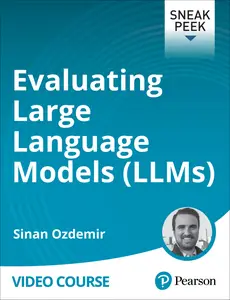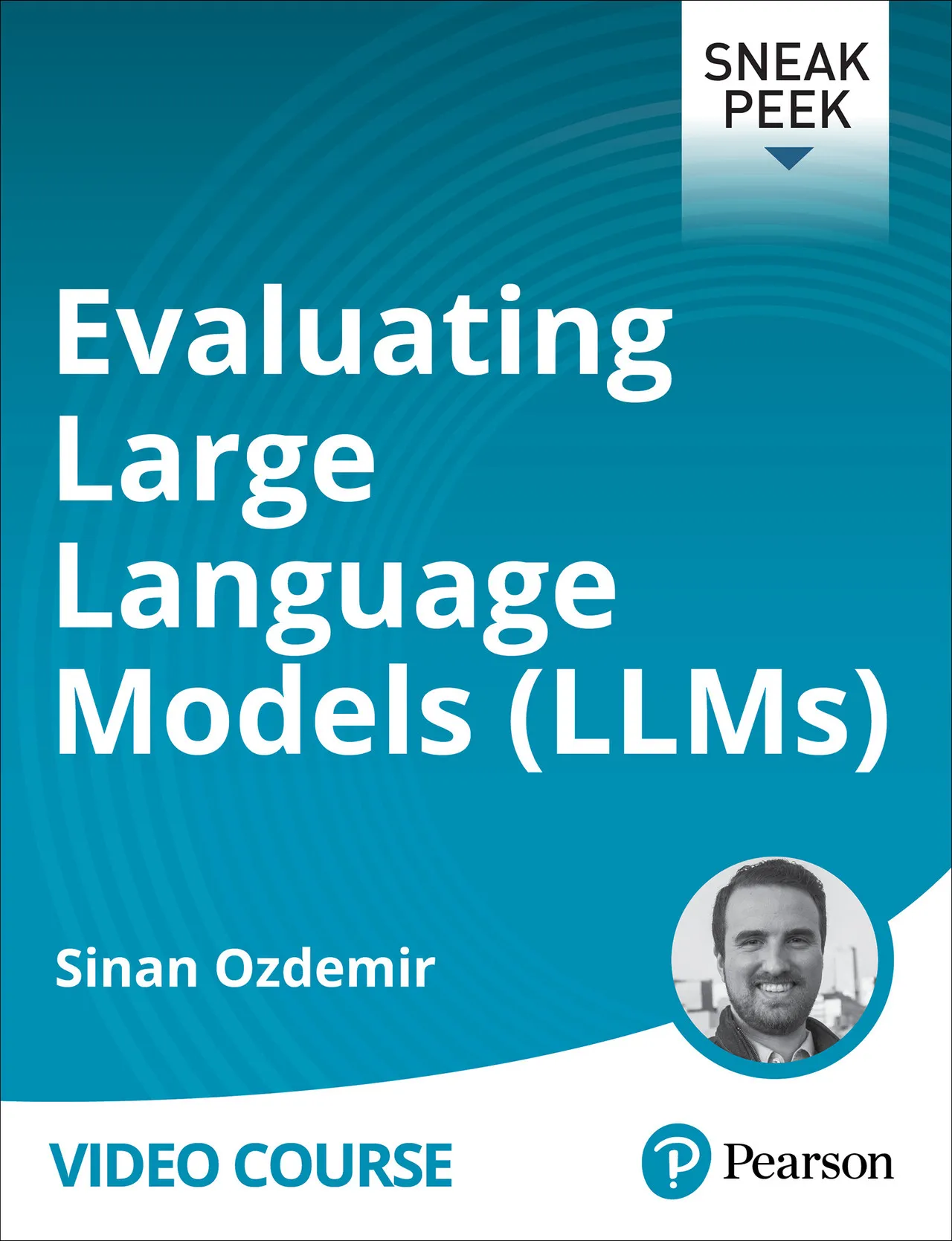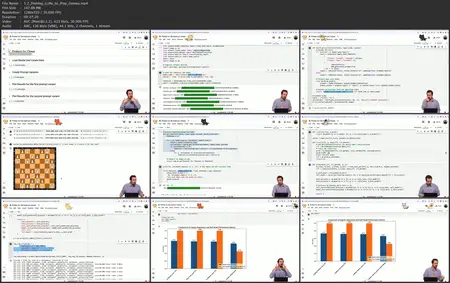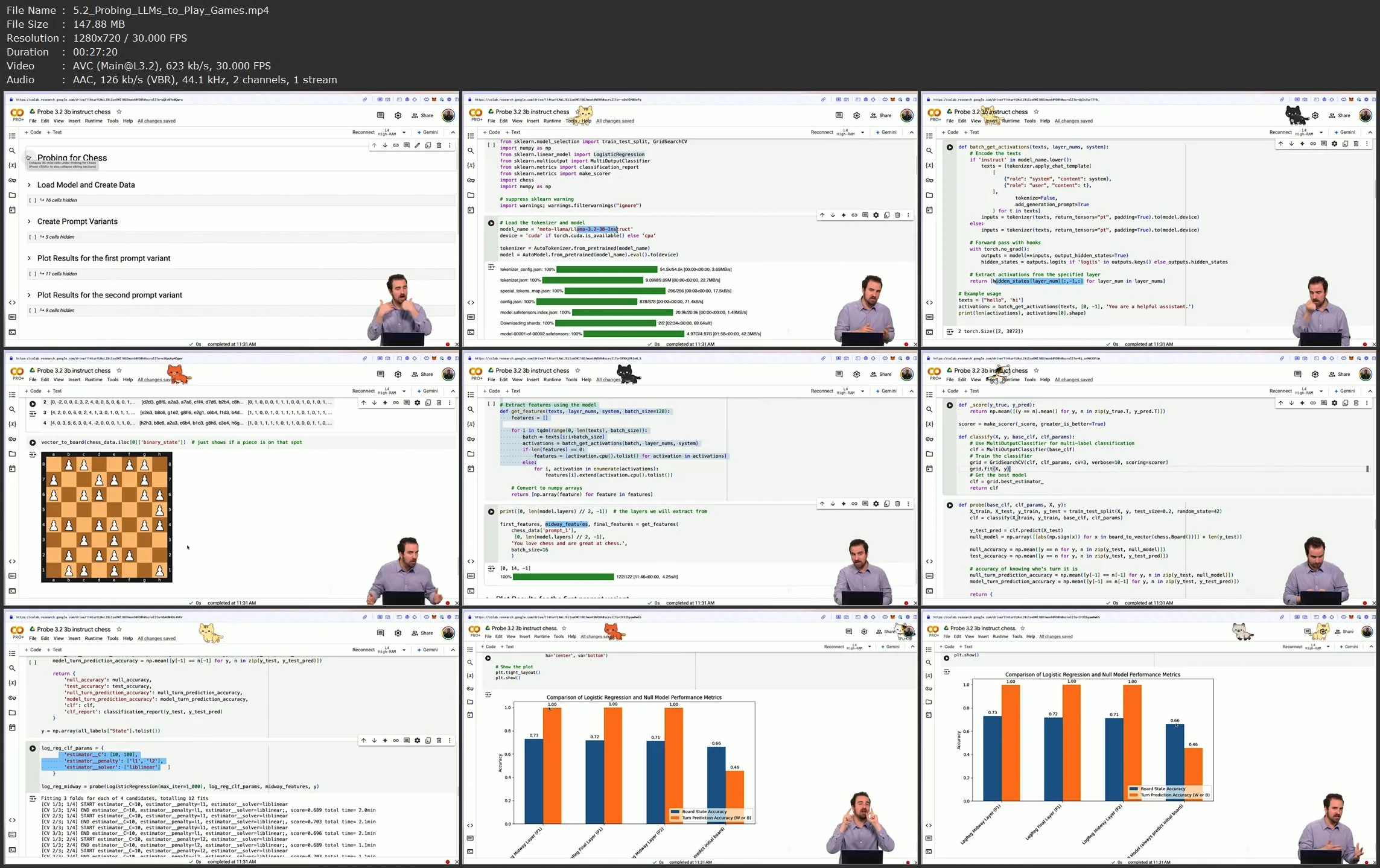Evaluating Large Language Models (LLMs)
ISBN: 9780135451922 | .MP4, AVC, 1280x720, 30 fps | English, AAC, 2 Ch | 7h 56m | 2.2 GB
Instructor: Sinan Ozdemir
ISBN: 9780135451922 | .MP4, AVC, 1280x720, 30 fps | English, AAC, 2 Ch | 7h 56m | 2.2 GB
Instructor: Sinan Ozdemir
The Sneak Peek program provides early access to Pearson video products and is exclusively available to subscribers. Content for titles in this program is made available throughout the development cycle, so products may not be complete, edited, or finalized, including video post-production editing.
Introduction
Evaluating Large Language Models (LLMs): Introduction
Lesson 1: Foundations of LLM Evaluation
Learning objectives
1.1 Introduction to Evaluation: Why It Matters
1.2 Generative versus Understanding Tasks
1.3 Key Metrics for Common Tasks
Lesson 2: Evaluating Generative Tasks
Learning objectives
2.1 Evaluating Multiple-Choice Tasks
2.2 Evaluating Free Text Response Tasks
2.3 AIs Supervising AIs: LLM as a Judge
Lesson 3: Evaluating Understanding Tasks
Learning objectives
3.1 Evaluating Embedding Tasks
3.2 Evaluating Classification Tasks
3.3 Building an LLM Classifier with BERT and GPT
Lesson 4: Using Benchmarks Effectively
Learning objectives
4.1 The Role of Benchmarks
4.2 Interrogating Common Benchmarks
4.3 Evaluating LLMs with Benchmarks
Lesson 5: Probing LLMs for a World Model
Learning objectives
5.1 Probing LLMs for Knowledge
5.2 Probing LLMs to Play Games
Lesson 6: Evaluating LLM Fine-Tuning
Learning objectives
6.1 Fine-Tuning Objectives
6.2 Metrics for Fine-Tuning Success
6.3 Practical Demonstration: Evaluating Fine-Tuning
6.4 Evaluating and Cleaning Data
Lesson 7: Case Studies
Learning objectives
7.1 Evaluating AI Agents: Task Automation and Tool Integration
7.2 Measuring Retrieval-Augmented Generation (RAG) Systems
7.3 Building and Evaluating a Recommendation Engine Using LLMs
7.4 Using Evaluation to Combat AI Drift
7.5 Time-Series Regression
Lesson 8: Summary of Evaluation and Looking Ahead
Learning objectives
8.1 When and How to Evaluate
8.2 Looking Ahead: Trends in LLM Evaluation
Summary
Evaluating Large Language Models (LLMs): Summary
Evaluating Large Language Models (LLMs): Introduction
Lesson 1: Foundations of LLM Evaluation
Learning objectives
1.1 Introduction to Evaluation: Why It Matters
1.2 Generative versus Understanding Tasks
1.3 Key Metrics for Common Tasks
Lesson 2: Evaluating Generative Tasks
Learning objectives
2.1 Evaluating Multiple-Choice Tasks
2.2 Evaluating Free Text Response Tasks
2.3 AIs Supervising AIs: LLM as a Judge
Lesson 3: Evaluating Understanding Tasks
Learning objectives
3.1 Evaluating Embedding Tasks
3.2 Evaluating Classification Tasks
3.3 Building an LLM Classifier with BERT and GPT
Lesson 4: Using Benchmarks Effectively
Learning objectives
4.1 The Role of Benchmarks
4.2 Interrogating Common Benchmarks
4.3 Evaluating LLMs with Benchmarks
Lesson 5: Probing LLMs for a World Model
Learning objectives
5.1 Probing LLMs for Knowledge
5.2 Probing LLMs to Play Games
Lesson 6: Evaluating LLM Fine-Tuning
Learning objectives
6.1 Fine-Tuning Objectives
6.2 Metrics for Fine-Tuning Success
6.3 Practical Demonstration: Evaluating Fine-Tuning
6.4 Evaluating and Cleaning Data
Lesson 7: Case Studies
Learning objectives
7.1 Evaluating AI Agents: Task Automation and Tool Integration
7.2 Measuring Retrieval-Augmented Generation (RAG) Systems
7.3 Building and Evaluating a Recommendation Engine Using LLMs
7.4 Using Evaluation to Combat AI Drift
7.5 Time-Series Regression
Lesson 8: Summary of Evaluation and Looking Ahead
Learning objectives
8.1 When and How to Evaluate
8.2 Looking Ahead: Trends in LLM Evaluation
Summary
Evaluating Large Language Models (LLMs): Summary





